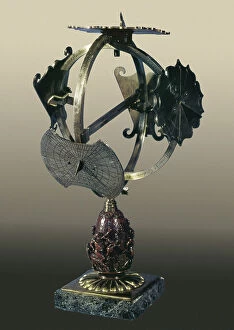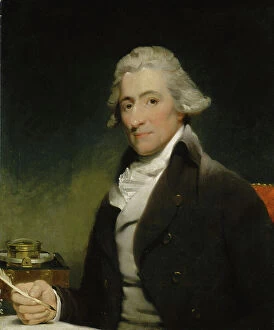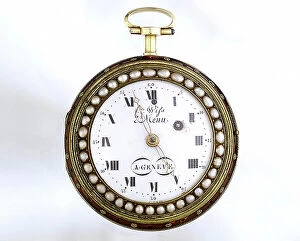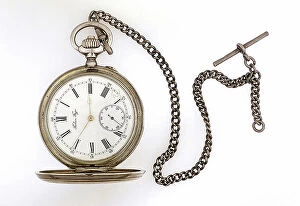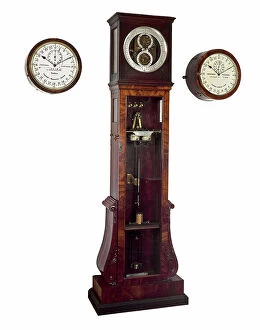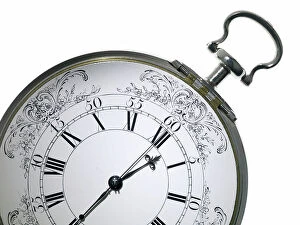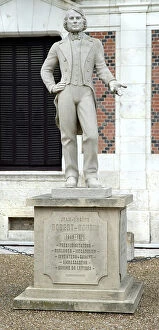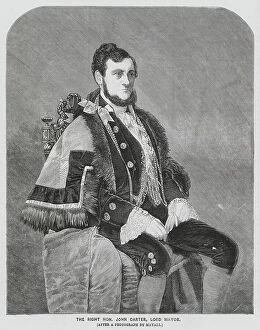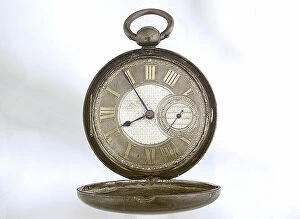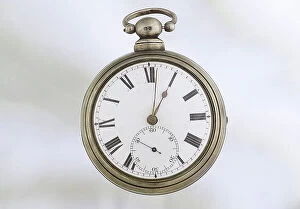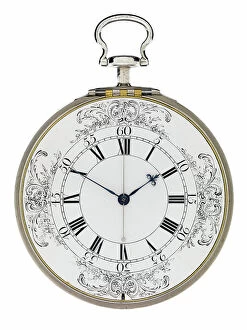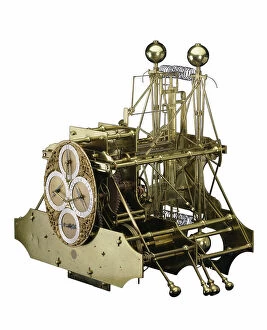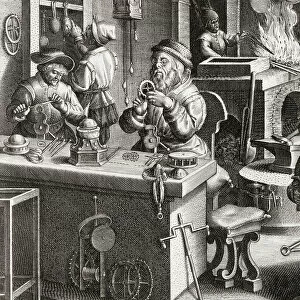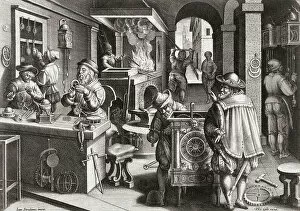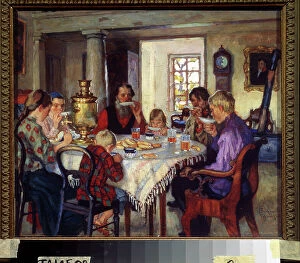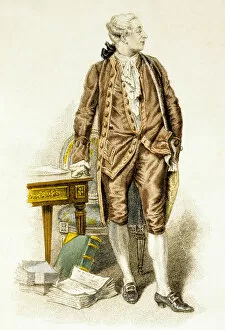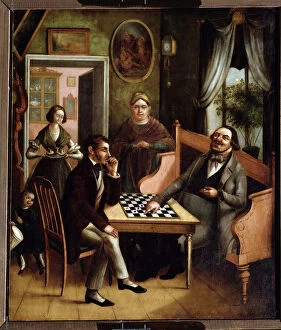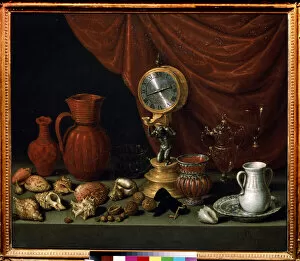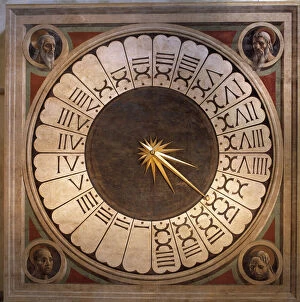Clock Making Collection
Clock making has a rich history, with its origins tracing back to clock makers in Holland in the late 16th century
For sale as Licensed Images
Choose your image, Select your licence and Download the media
Clock making has a rich history, with its origins tracing back to clock makers in Holland in the late 16th century. These skilled craftsmen dedicated their time and expertise to create intricate timepieces that would stand the test of time. In one painting, we see a glimpse into the lives of new homeowners in the early 20th century. A large family gathers around the table, enjoying a moment of respite while sipping tea in their newly acquired house. Amongst their cherished possessions is an exquisite clock, symbolizing not only their sense of style but also their appreciation for craftsmanship. Pierre-Augustin Caron de Beaumarchais, depicted in a coloured engraving, was not only known as a playwright but also had a passion for horology. His love for clocks led him to become an avid collector and supporter of clock makers during his lifetime. Moving across borders, Ivan Stepanovich Doshchennikov's painting captures a group of bourgeois Russians engrossed in playing checkers within an interior adorned with various objects. Among them stands an elegant clock - perhaps serving as both decoration and reminder of the passing hours. The world is filled with specialized tools and techniques. Engravings from "Le Vocabulaire Illustre" showcase instruments such as Brucelles (spring nippers) and Federzange (spring pliers), essential for precise assembly by skilled horologists. Antonio de Pereda y Salgado's still life painting portrays more than just objects; it tells a story through symbolism. Alongside beautiful shells, nuts, and crystal glassware rests an intricately designed pendulum clock - representing the fleeting nature of time itself. The dial on the Cathedral Santa Maria del Fiore's grand clock serves as both functional instrument and architectural masterpiece. Its presence reminds us that throughout history, clocks have played vital roles beyond mere timekeeping - they have been symbols of power, faith, and community.

